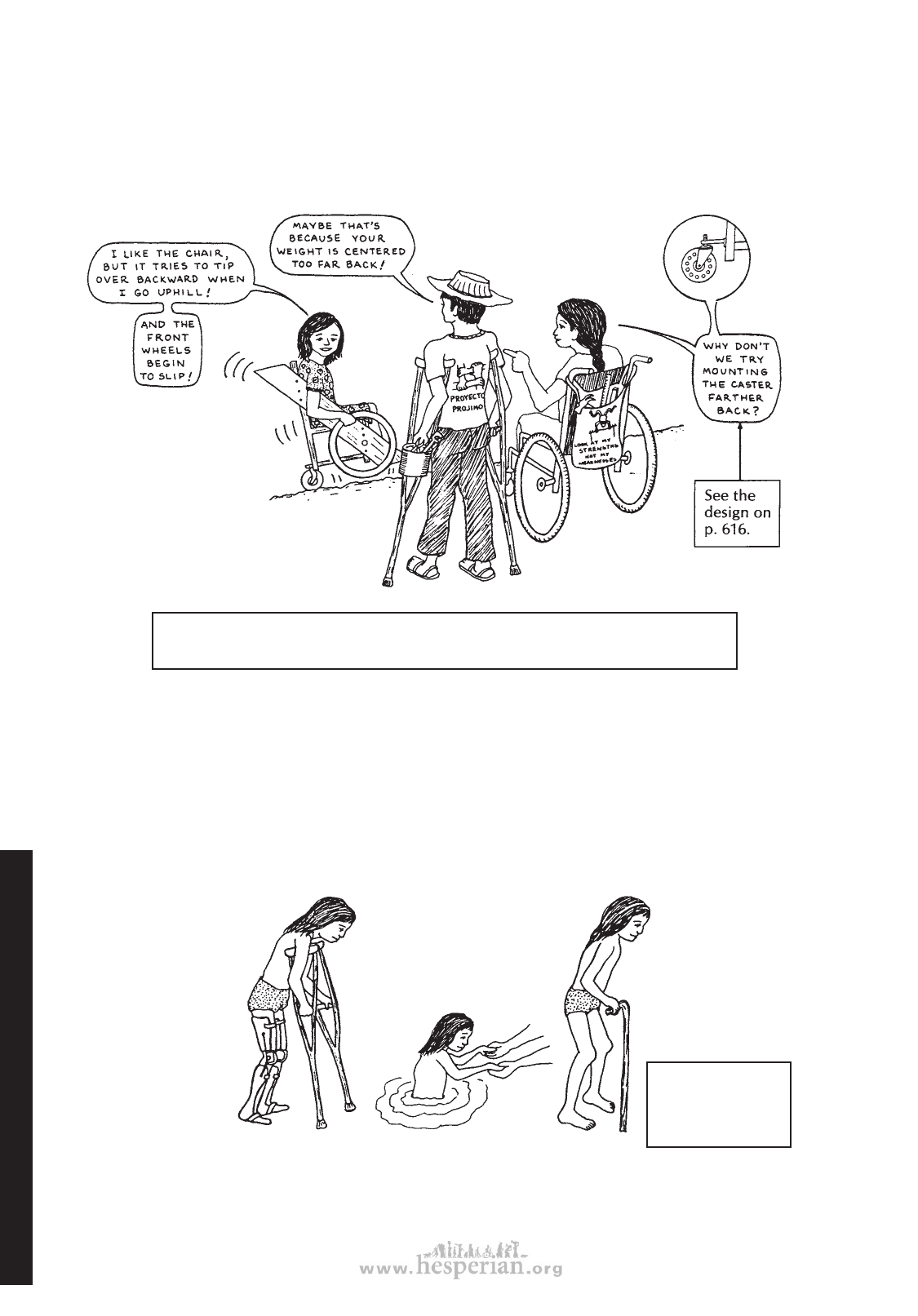
526 CHAPTER 56
I learned something from these childhood experiences. I learned how important it
is to listen to the disabled child, to ask the child at every stage how she feels about
an aid or an exercise, and to include the child and her parents in deciding what she
needs. The child and her parents may not always be right. But doctors, therapists,
and rehabilitation workers are not always right either. By respecting each other’s
special knowledge and looking together for solutions, they can come closest to
meeting the child’s needs.
Some of the best design improvements in aids and equipment come
from the ideas and suggestions of the children who try them out.
PRECAUTIONS IN PROVIDING A CHILD WITH AIDS,
EQUIPMENT AND PROCEDURES
To make sure aids and equipment really meet the child’s needs, consider the following:
1. How necessary are the aids or equipment? Might it help the child more to learn
to manage without them? For example:
Elena has arthritis.
A better solution might be
Also, using a
Her thighs have
exercise to strengthen her
cane instead of
become too weak
thighs. For example, walking
crutches helps
to support her body
in water will make it easier
her to use and
weight. You can fit
for her legs to support her
strengthen her
her with braces and
weight.
thigh muscles
crutches. But watch
(see p. 587).
out! These aids will
not make her thighs
stronger. They may
AVOID MAKING
even make them
THE CHILD TOO
weaker, since she
could then walk
DEPENDENT ON
AIDS!
without having
to use her thigh
muscles.
LESS APPROPRIATE
MORE APPROPRIATE
Disabled village Children